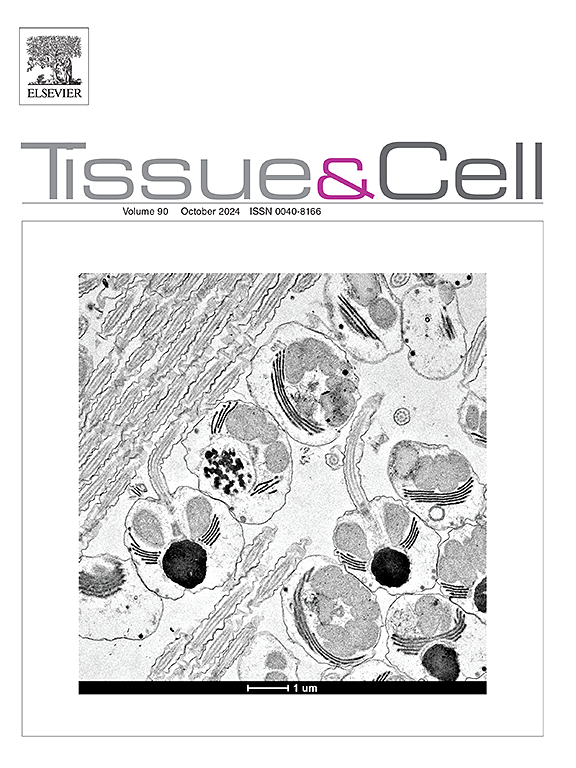Roxadustat pre-conditioning and cyclic uniaxial stretching improve tenogenic differentiation potential of human adipose derived mesenchymal stromal cells
IF 2.7
4区 生物学
Q1 ANATOMY & MORPHOLOGY
引用次数: 0
Abstract
Tendon injuries represent a significant challenge to treat owing to their limited intrinsic reparative capacity. The use of mesenchymal stem cells (MSC) offers promising alternative therapeutic option to augments tendon repair. It is hypothesised that the activation of hypoxia inducible factor-1 alpha (HIF-1α), could facilitate the tendon repair process by promoting the proliferation and tenogenic differentiation of MSCs. To demonstrate this, a study was conducted incorporating the use of Roxadustat, a specific hypoxia mimetic mediator and cyclic uniaxial stretching at a frequency of 1 Hz and 8 % strain on adipose derived-mesenchymal stromal cells (ADMSCs). Methods: Cellular morphology, proliferation rate, tenogenic protein and gene expression levels from 8 different treatment groups were compared. These groups include untreated ADMSCs (Control), Roxadustat pre-conditioned ADMSCs (ROX), ADMSCs subjected CAY10585 treatment only (CAY), Roxadustat pre-conditioned ADMSCs with CAY10585 inhibition (ROX+CAY), ADMSCs subjected to uniaxial stretching only (S), Roxadustat pre-conditioned ADMSCs with uniaxial stretching (ROX+S), ADMSCs subjected CAY10585 with uniaxial stretching (CAY+S) and primary tenocytes (Tenocytes). Results: ROX+S group exhibited the highest expression of HIF-1α and demonstrated a significant up-regulation of collagen I and III expressions, increasing by 4.9 and 5.6-fold compared to ROX group, respectively. There is a significant increase of SCX, TNC, TNMD, COLI and COLIII expression in this combination treatment group; (SCX= 9.9, TNC= 12.6, TNMD= 7.0, COLI= 8.0 and COLIII= 10.0-fold). Conversely, the expression of the markers markedly reduced with HIF-1α inhibitor CAY10585. However, uniaxial stretching effectively counteracted the inhibitory effects of CAY10585 in the CAY+ S group, resulting in a 3.9-fold increase in SCX expression compared to CAY treatment alone. Conclusion: HIF-1α accumulation promotes superior tenogenic differentiation of ADMSCs, suggesting that the combination of Roxadustat and cyclic uniaxial stretching may be a potential therapeutic mediator in tendon repair strategies.
罗沙司他预处理和循环单轴拉伸可提高人脂肪间充质基质细胞的成腱分化潜力
本文章由计算机程序翻译,如有差异,请以英文原文为准。
求助全文
约1分钟内获得全文
求助全文
来源期刊

Tissue & cell
医学-解剖学与形态学
CiteScore
3.90
自引率
0.00%
发文量
234
期刊介绍:
Tissue and Cell is devoted to original research on the organization of cells, subcellular and extracellular components at all levels, including the grouping and interrelations of cells in tissues and organs. The journal encourages submission of ultrastructural studies that provide novel insights into structure, function and physiology of cells and tissues, in health and disease. Bioengineering and stem cells studies focused on the description of morphological and/or histological data are also welcomed.
Studies investigating the effect of compounds and/or substances on structure of cells and tissues are generally outside the scope of this journal. For consideration, studies should contain a clear rationale on the use of (a) given substance(s), have a compelling morphological and structural focus and present novel incremental findings from previous literature.
 求助内容:
求助内容: 应助结果提醒方式:
应助结果提醒方式:


